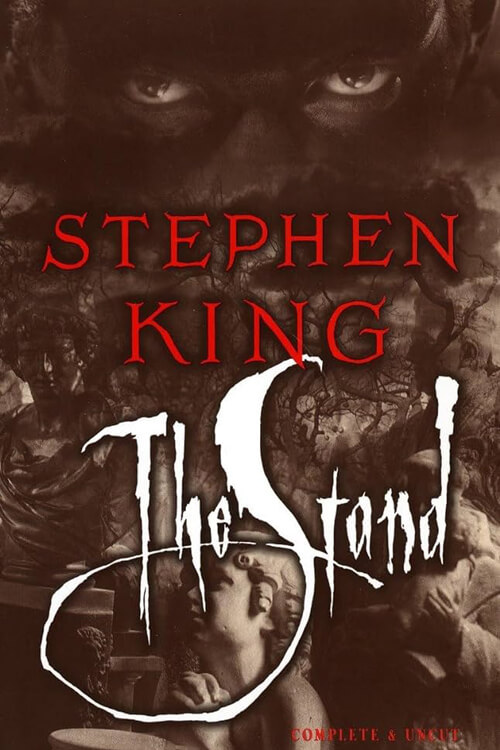
The Stand
I haven’t restored all four hundred of the missing pages; there is a difference between doing it up right and just being downright vulgar. Some of what was left on the cutting room floor when I turned in the truncated version deserved to be left there, and there it remains. Other things, such as Frannie’s confrontation with her mother early in the book, seem to add that richness and dimension which I, as a reader, enjoy deeply. Returning to “Hansel and Gretel” for just a moment, you may remember that the wicked stepmother demands that her husband bring her the hearts of the children as proof that the hapless woodcutter has done as she has ordered.
The woodcutter demonstrates one dim vestige of intelligence by bringing her the hearts of two rabbits. Or take the famous trail of breadcrumbs Hansel leaves behind, so he and his sister can find their way back. Thinking dude! But when he attempts to follow the backtrail, he finds that the birds have eaten it. Neither of these bits are strictly essential to the plot, but in another way they make the plot—they are great and magical bits of storytelling. They change what could have been a dull piece of work into a tale which has charmed and terrified readers for over a hundred years. I suspect nothing added here is as good as Hansel’s trail of breadcrumbs, but I have always regretted the fact that no one but me and a few in-house readers at Doubleday ever met that maniac who simply calls himself The Kid … or witnessed what happens to him outside a tunnel which counterpoints another tunnel half a continent away—the Lincoln Tunnel in New York, which two of the characters negotiate earlier in the story.
So here is The Stand, Constant Reader, as its author originally intended for it to roll out of the showroom. All its chrome is now intact, for better or for worse. And the final reason for presenting this version is the simplest. Although it has never been my favorite novel, it is the one people who like my books seem to like the most. When I speak (which is as rarely as possible), people always speak to me about The Stand. They discuss the characters as though they were living people, and ask frequently, “What happened to so-and-so?” … as if I got letters from them every now and again. I am inevitably asked if it is ever going to be a movie. The answer, by the way, is probably yes. Will it be a good one? I don’t know. Bad or good, movies nearly always have a strange diminishing effect on works of fantasy (of course there are exceptions; The Wizard of Oz is an example which springs immediately to mind).
Read or download Book
Stephen King
Stephen Edwin King (born September 21, 1947) is an American author. Called the “King of Horror”, he has also explored other genres, among them suspense, crime, science-fiction, fantasy and mystery.
Biography.
He has also written approximately 200 short stories, most of which have been published in collections. His debut, Carrie (1974), established him in horror. Different Seasons (1982), a collection of four novellas, was his first major departure from the genre. Among the films adapted from King’s fiction are Carrie, Christine, The Shining, The Dead Zone, Stand by Me, Misery, Dolores Claiborne, The Shawshank Redemption, The Green Mile and It. He has published under the pseudonym Richard Bachman and has co-written works with other authors, notably his friend Peter Straub and sons Joe Hill and Owen King. He has also written nonfiction, notably On Writing: A Memoir of the Craft.
Several of King’s works have won the Bram Stoker and August Derleth Awards. He has also won awards for his overall contributions to literature, including the 2003 Medal for Distinguished Contribution to American Letters, the 2007 Grand Master Award from the Mystery Writers of America and the 2014 National Medal of Arts. Joyce Carol Oates called King “a brilliantly rooted, psychologically ‘realistic’ writer, for whom the American scene has been a continuous source of inspiration, and American popular culture a vast cornucopia of possibilities.”
Early life and education
King was born in Portland, Maine, on September 21, 1947. His father, Donald Edwin King, a traveling vacuum salesman after returning from World War II, was born in Indiana with the surname Pollock, changing it to King as an adult. King’s mother was Nellie Ruth King (née Pillsbury). His parents were married in Scarborough, Maine, on July 23, 1939. They lived with Donald’s family in Chicago before moving to Croton-on-Hudson, New York. King’s parents returned to Maine towards the end of World War II, living in a modest house in Scarborough. He is of Scots-Irish descent.
When King was two, his father left the family. His mother raised him and his older brother David by herself, sometimes under great financial strain. They moved from Scarborough and depended on relatives in Chicago, Illinois; Croton-on-Hudson; West De Pere, Wisconsin; Fort Wayne, Indiana; Malden, Massachusetts; and Stratford, Connecticut. When King was 11, his family moved to Durham, Maine, where his mother cared for her parents until their deaths. After that, she became a caregiver in a local residential facility for the mentally challenged.






